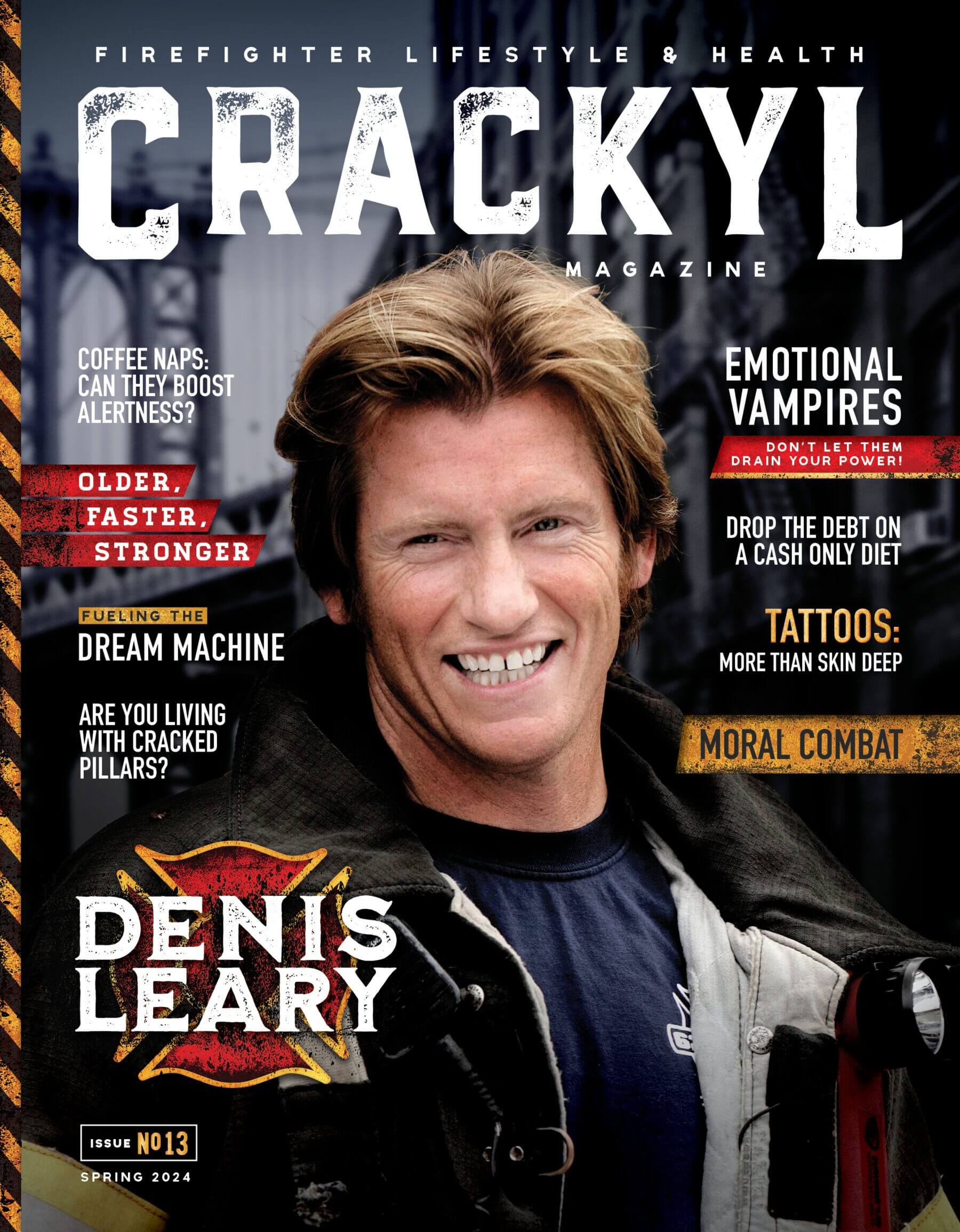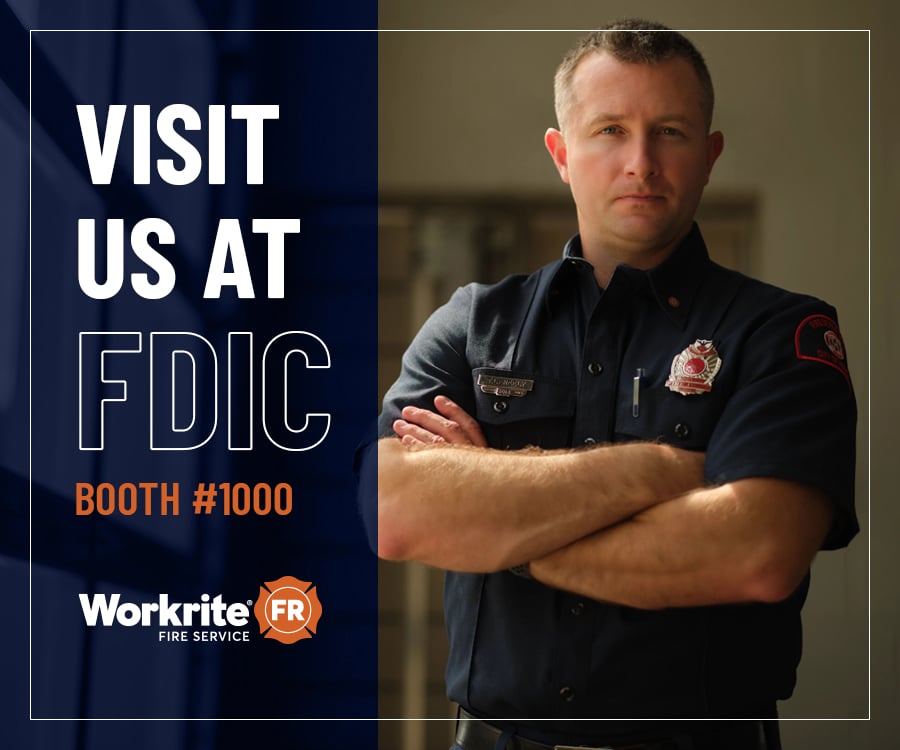Training Movements (Not Muscles)

By: Amber Bowman & TJ Johnston – Fit By Fire
As fitness coaches and career firefighters we have had the privilege to work, learn and progress alongside our sisters and brothers. We often take deep dives or as we like to call it ‘geek out’ on what makes the best fitness training program specifically to prepare first responders for the mental and physical stresses of the job.
If you sit down for a firehall coffee chat and ask your crew how they plan out their workouts, you’re going to get a variety of different answers. Some will say they don’t plan, they just try to get to the gym and make it up as they go. Others probably say, ‘if no one moves, no one gets hurt!’, which is one of the worst mindsets to have. But most will plan their workouts based on muscle groups. Today I’m going to do arms, tomorrow is chest, back on Thursday, maybe some legs on Friday (but most likely they are going to skip leg day! Nobody should skip leg day.
The problem with focused muscle groups
The problem with focusing your days on muscle groups is the nature of firefighting requires dynamic movement that can be different at every call. Carrying a patient on a scoop stretcher, dragging hose, climbing stairs, carrying gear, crawling around in the dark looking for the fire, pulling ceiling while doing overhaul, these are the firefighting tasks that we need to be preparing for in the gym. Taking the focus off of the ‘muscle’ and having the mindset of training movements will not only help you excel on the fireground but it also increases your chances of making it into retirement injury and pain free.
How do we look at setting up a training program to do this? Instead of picking a set of muscles to train on particular days, pick exercises that fit into these main movement patterns that mimic on the job tasks.
Squat, Lift, Lunge/Carry, Push, & Pull
These movement categories can be split up over a single workout, a week of workouts or even over a month. You can still add in some core exercises, some accessory movements and in some cases it’s good to train patterns in combination. Utilizing these categories of patterns will ensure your training matches the demand of the job so that you are able to go from zero to hero when the call comes in.
So instead of today’s workout being, ‘tri’s for the guys and curls for the girls’, give this full body Firefighter Functional Circuit a try!
Perform this circuit with a running clock, switching stations every minute. The goal is to get the recommended amount of reps and then rest the remaining time in that minute for that station.
Squats
Minute 1: Recommended 10-12 reps odd-object Zercher squat. During the squat support the weight out in front of you keeping your arms bent and 90 degrees. Keep your shoulder back and down, chest tall and the weight controlled. Lower yourself down slowly so that your hip goes slightly below your knee, then drive yourself back to a standing position, fully opening your hips every rep. Keep your back and belly flat throughout the whole movement.
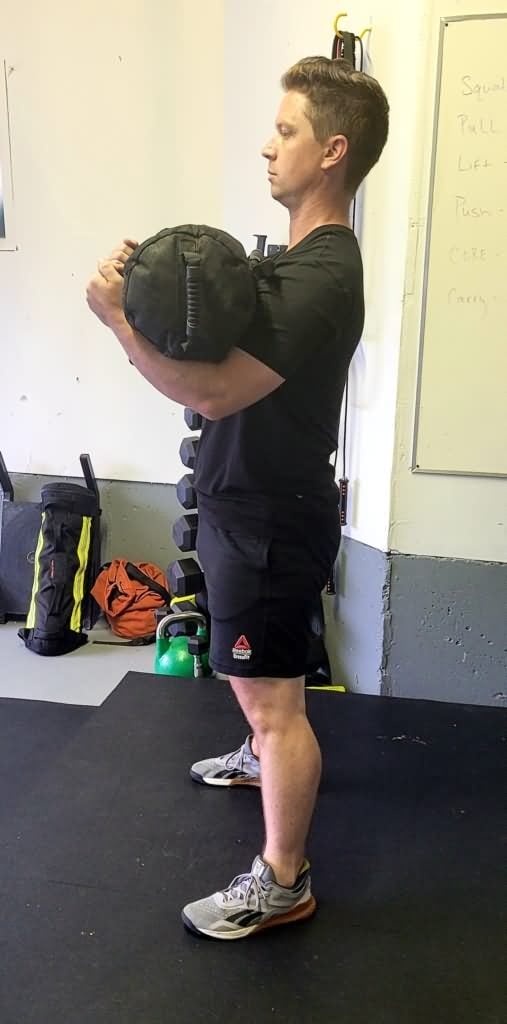

Pull
Minute 2: Recommended 6-8 reps each side standing single arm cable or band row. You can practice this with both legs in line, in a split position or even balancing on one leg at a time. Keep your shoulder blades down and back as you pull your elbow past your body, pausing for a second before straightening your arm back out. Avoid excessive trunk rotation so the work comes from your back, shoulders and arms.
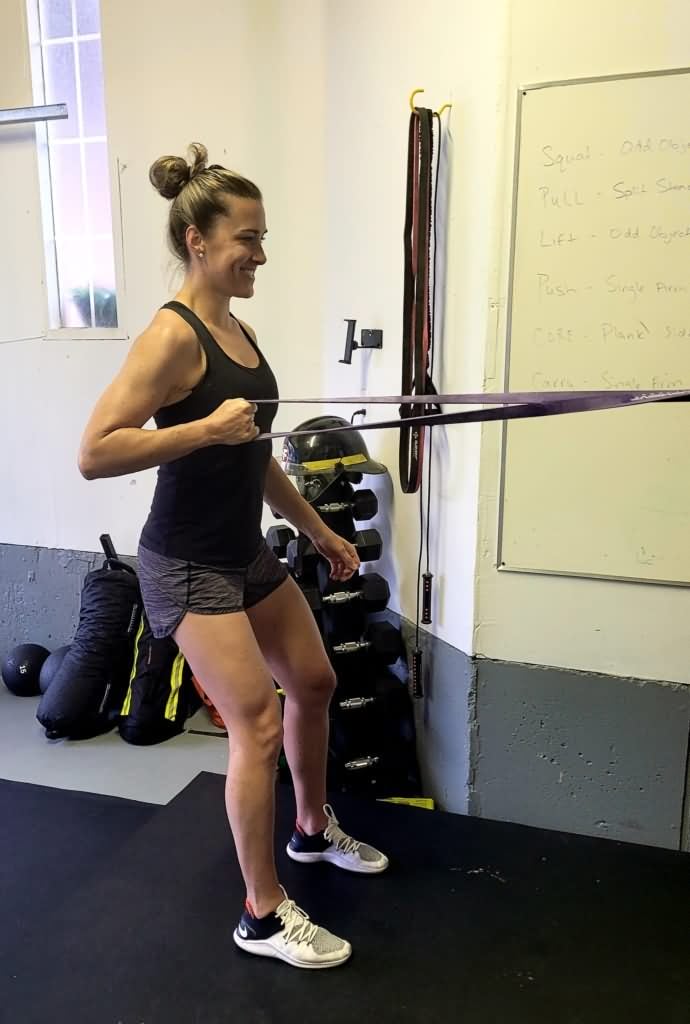
Lift
Minute 3: Recommended 12-16 reps odd-object shouldering. Starting with a flat back hinge, deadlift the weight up, as you fully stand, come up fast as if you are going to jump, shrug your shoulders, pull your elbows up and catch the object on one shoulder, alternate sides each rep. If you haven’t mastered the odd-object deadlift, start with that first.

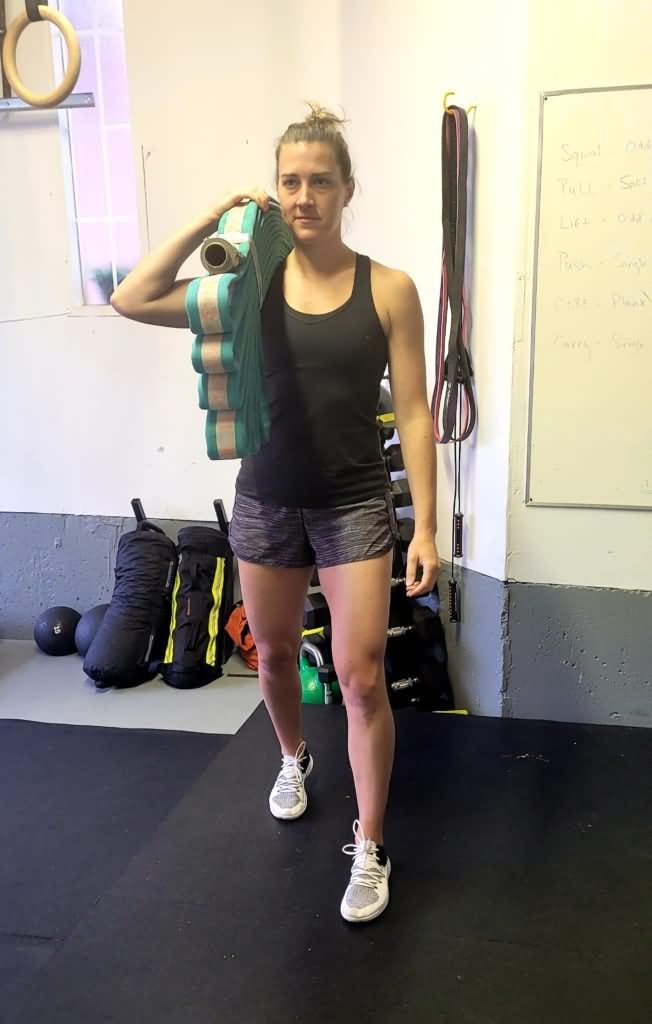
Push
Minute 4: Recommended 6-8 reps each side single arm dumbbell/kettlebell push press. Staying with your spine nice and tall, slightly bend your knees, from there with the feeling of trying to jump off the ground drive your legs straight. The dumbbell will feel as if it wants to pop off your shoulder, at that moment drive your arm straight up over your shoulder in-line with your ear. Watch that you don’t arch your back or side bend to compensate for tight shoulders and the weight being on one side at a time.

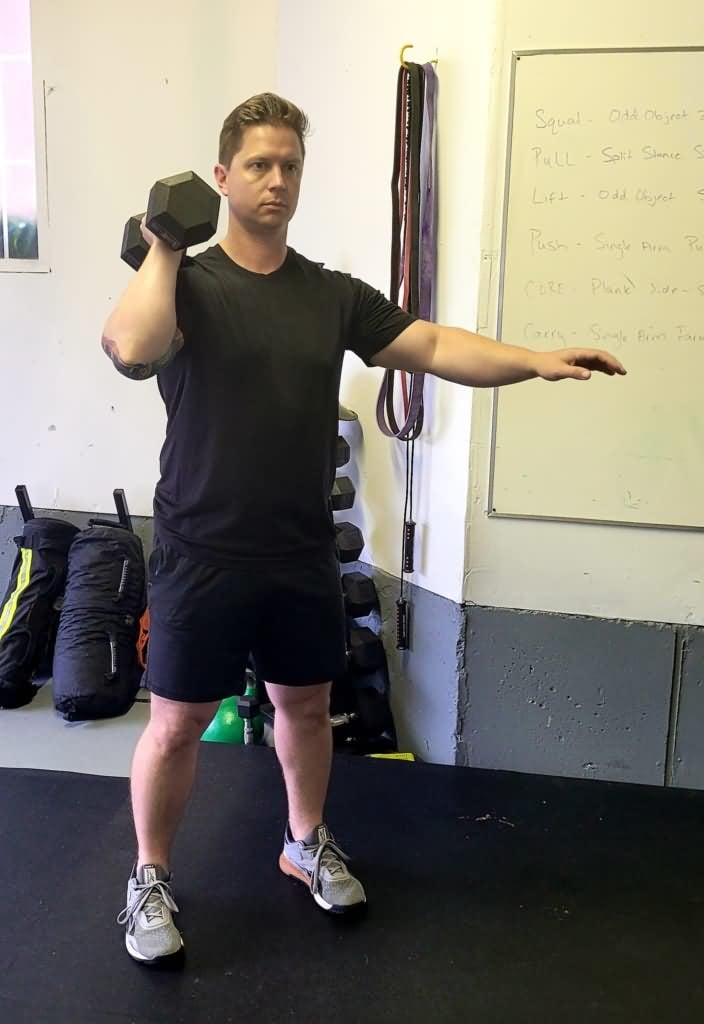
Core
Minute 5: Recommended 12-16 reps plank side-to-side object slide The goal is to keep a braced flat back and to not rotate your hips as you reach across underneath you and pull the weight across your body sliding it on the floor.
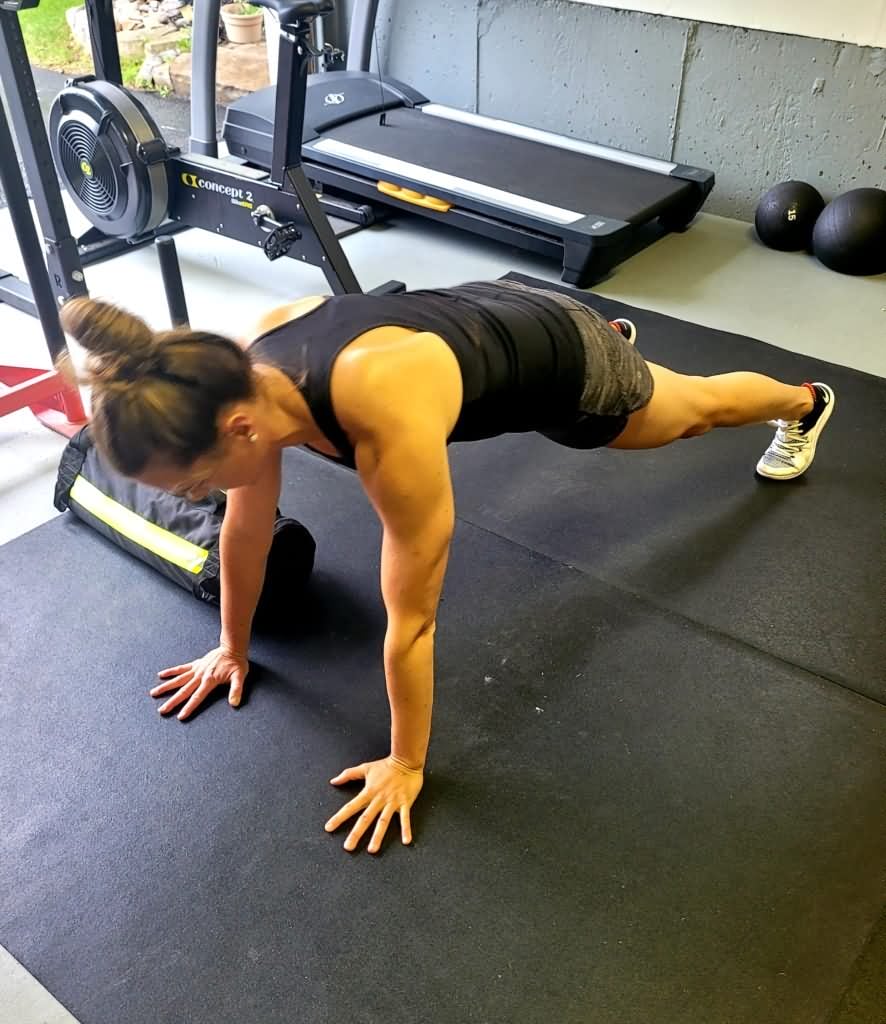
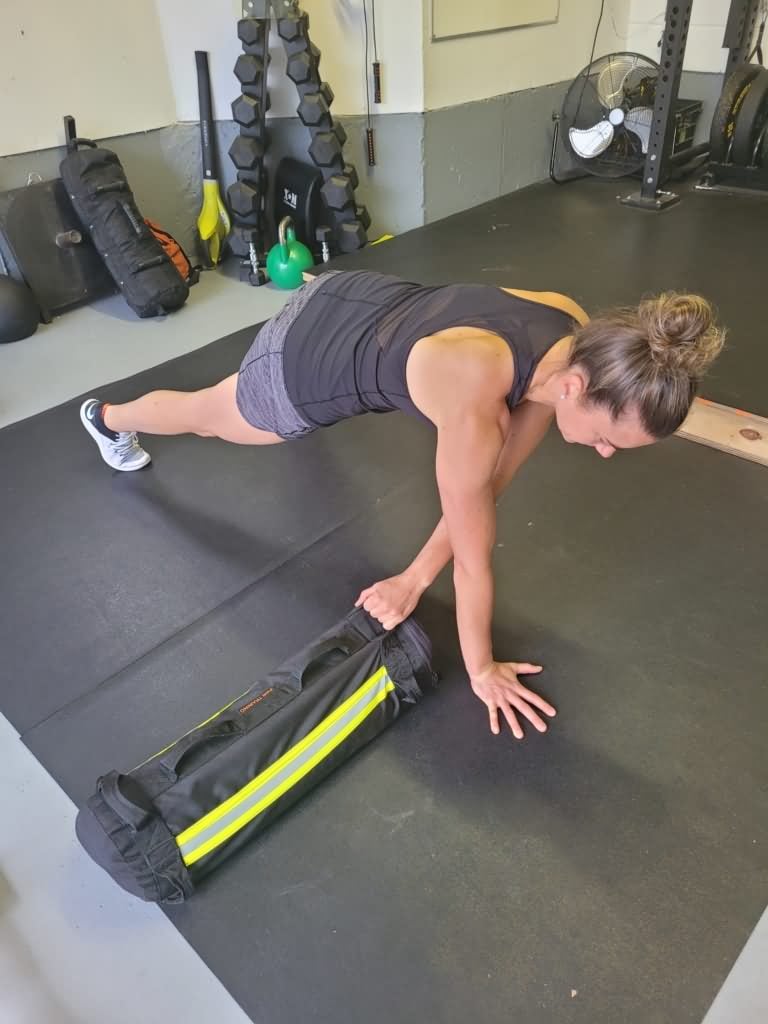
Carry
Minute 6: Recommended 20 meters each arm single arm heavy farmers carry pretty. It’s critical for first responders to do heavy carries and lunges. Especially loaded side-to-side as this will help bombproof your lower back and improve grip strength so you will be ready to carry heavy awkward tools or victims at work. Make sure to keep a braced core and pay attention to not leaning to the side as you perform the farmers carry.

Rest
Minute 7: Resting and adjusting weights and stations preparing for the next round.
This is a super simple circuit format that emphasizes movements directly improving on firefighter specific tasks. You can adjust the exercises and reps as you like, but the goal is to build in 20-30 seconds of rest between stations so you can focus on quality form and go heavy as technique allows.
We use this format to train on shift with our crews at the firehall because it allows us to work with large groups with minimal equipment and get a workout done in less than an hour. Depending on the day we would do a 5-10 minute dynamic warm-up, 3-4 rounds of the EMOM circuit and a 5-10 minute static stretch cooldown.
If you are looking for more firefighter specific fitness ideas and a link to our exercise library visit us at www.fitbyfire.com
Podcast
Contests & Promotions
